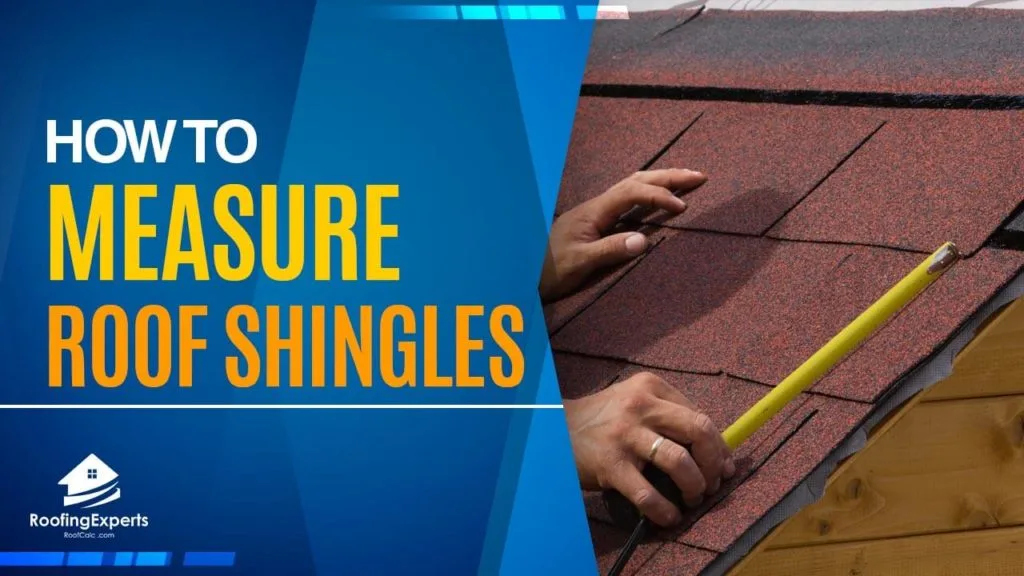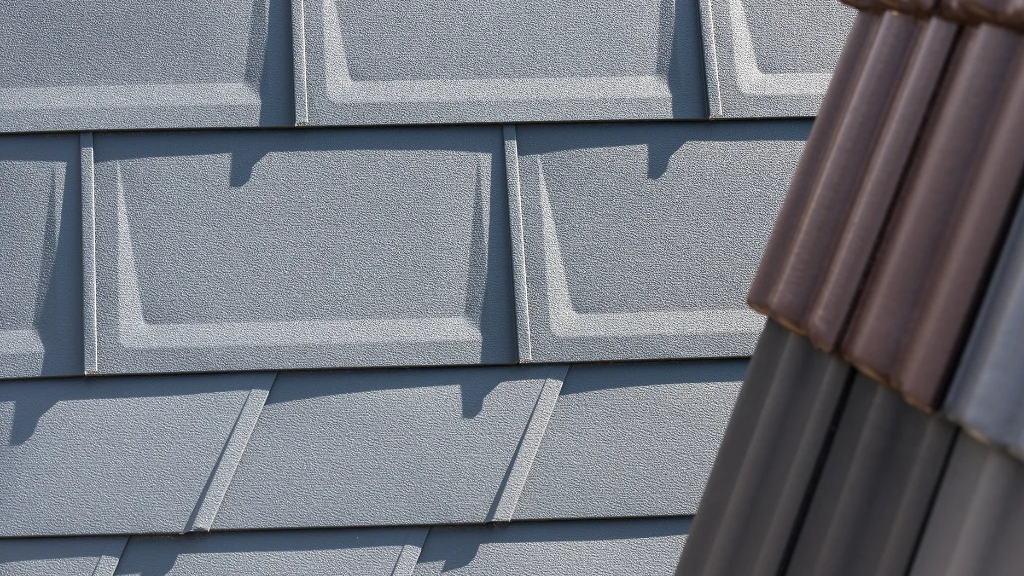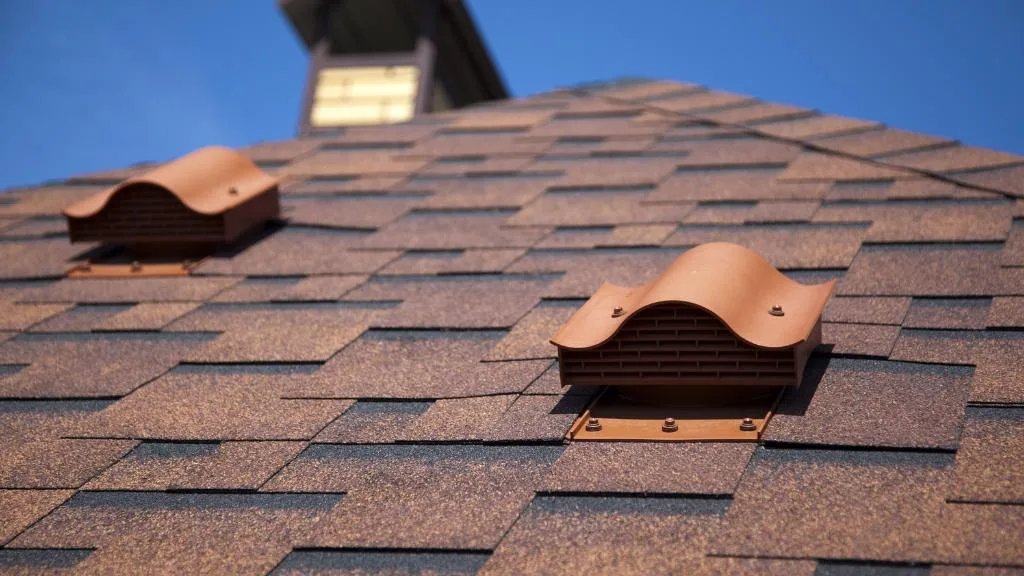
Since making mistakes during a roof installation would be expensive, preparing the measurements and equipment beforehand makes the job easier. To avoid overspending, knowing how to measure roofing shingles to be placed on the roof is an essential step.
By giving you the common measurements and ways of calculating roof shingles, this article will help you accurately estimate how much roofing material is needed. Let’s dive in…
How Are Roofing Shingles Measured?
Roof shingles are either sold by the bundle or the square. To measure the number of roofing shingles, you need to know the total sq. ft. of your roof’s surface. The number of shingles to cover 100 sq. ft. of a roof is one square of shingles. On average, a square is three bundles of roofing shingles.
There are 29 shingles with measurements of 12 in. by 36 in. in each bundle when in three bundles per square. To determine how many bundles a client needs to order is to calculate the roof area. This is done by measuring the width to the length of your house. When the roof area is calculated, additional shingles will be added to account for waste and backup shingles.
How To Measure Roofing Shingles?
You can measure a roof three ways: the measurement method, sheet-count method, and shingle-count method. Measuring the needed roofing shingles will help you avoid overspending and excessively buying shingles.
Measurement method
The most precise approach to figure the number of bundles of shingles is to get up on the rooftop and measure rooftop planes individually. If all the rooftop planes are rectangles, you just need to multiply the length and width to get the area and add each square footage.
Taking the measurements on the rooftop is dangerous, so it is necessary to take safety precautions.
There are times that the roof is too steep to climb up to, so an alternative would be to measure from the ground. To do this, you need to measure the building length from the ground and estimate the roof-edge overhangs. Lastly, using a ladder and measuring tape, measure from the roof edge to the ridge.
Sheet-count method
The sheet-count method, which is often preferred more than the measurement method, is fast and can be completed on the ground. The condition is you can utilize this strategy just on rooftops sheathed with 4x8ft. underlying boards. Each one is 32 sq. ft., and you can check the full boards from the earliest stage.
Another approach to counting them up is by assessing the general size of crosscut sheets along the edges of the rooftop to the size of a full sheet. Calculating the number of packs you need is straightforward in the event that you are utilizing shingles that come three groups to a square.
Each pack covers 33.3 sq. ft. of rooftop region—which is sufficiently close to the 32 sq. ft. a sheet covers, which implies you can arrange one group for each sheet of rooftop sheathing.
Shingle-count method
When the old shingles haven’t been peeled off yet or if you’ll be undertaking a layover, this approach is simpler to measure (meaning shingling over existing shingles). You must first determine the length of each roof plane’s eaves, either directly from the roof or from the ground. If the shingles are conventional three-tab, measure the number of tabs to determine the length of the edges.
The next step would be to count the existing shingles from its edge to the rakes to know its length. Each piece of shingles has a five-inch exposure, so increase the number of courses by five inches and divide by 12 to get the rakes’ length.
Check to see that the current shingles are conventional 12-in. by 36-in. shingles, not metric shingles. To convert the area into square feet, multiply the length by the width.

What Are Roof Shingles?
Roofing shingles are watertight and wind-resistant seals that protect the roof from environmental damage. They are individual roof coverings that overlap one another when placed on the roof.
Many shingle installations are placed on top of an underlayment material such as asphalt felt paper which prevents leaks from rain and snow. In addition to having a variety of styles, colors, and textures, roofing shingles vary in price. On average, most homeowners pay between $8,000 and $9,000 for shingle installation.
Depending on the location, the availability of design varies per state. The type of shingle is considered before construction because the roof pitch and construction method varies. You can choose almost any kind of shingle to match your home’s roofing design and increase the aesthetic of your home.
What Are The Types Of Roofing Shingles?
Roofing shingles are made from wood, slate, metal, plastic, and composite materials. These materials are made such as asphalt, wood, and plastic roofing shingles. These can be bought from local construction suppliers and hardware stores near you.
Asphalt shingles
Relatively the most common type of house roofing shingle, asphalt shingles are the most economical shingle homeowners can buy. It is inexpensive, easy to install, and lightweight. Certain varieties of asphalt shingles are manufactured to resemble wood, tile, slate, while providing more benefits than other roofing materials.
This type comes in layered sheets on the roof to give a more expensive illusion than single shingles such as slate. Prices vary depending on the pitch, slope, and roof size, and quality of the asphalt shingle. The average cost would be $1.50 to $6 per sq. foot or $100 to $600 per square installed on a standard-sized roof.
Wood shingles
Wood shingles are thin and narrow wood that are used to cover roofs as protection from the weather. Historically, shingles were taken from bolts of wood. However, wood shingles now are cut into thin pieces while shakes are split out of a bolt. Wood shingles are sawn on the sides when compared to a shake.
An average wood shingle lasts up to 30 years but requires annual maintenance. Cedar, also known as “shakes”, is the preferred choice for this shingle because it is insect and rot-resistant. The average installation price for a wood roofing shingle costs around $4,000 to $10,000 on a 1,000 sq. ft home. A wood shingle’s cheapest cost is $3.00 per square foot, compared to $2.50 per square foot for asphalt shingles.
Plastic shingles
Plastic shingles, synthetic or composite shingles, have a life expectancy of 40 years with little to no maintenance. Plastic polymers, a type of plastic shingle, can last more than 50 years and require a lot less maintenance. The installation process is much easier than other roofing shingle types because it requires less time and resources when installing.
This type is a cheaper alternative to more expensive types of roofing because of its ability to imitate their appearance. The light material plastic is made of makes it easier to install because it does not need additional structural support. The average roofing installation price costs around $3 to $6 per sq. ft or $400 to $700 per sq. depending on the pitch, slope, and roof size on a standard-sized roof.

